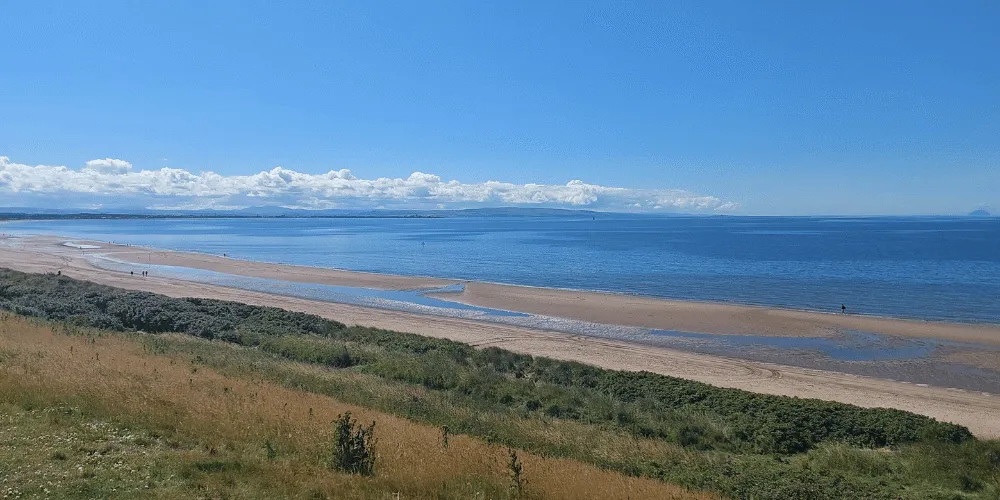Cabinet approves plans for four coastal areas

Plans to protect sections of North Ayrshire’s shoreline from coastal change and erosion have been approved by Cabinet.
Two Draft Local Coastal Change Adaptation Plans - one for Sandylands Promenade and Stevenston Beach and one for Irvine Harbour and Irvine Beach - were presented to Cabinet on 30 September.
In partnership with South Ayrshire Council, North Ayrshire Council replaced the adopted Ayrshire Shoreline Management Plan (SMP) from 2018 with a Coastal Change Adaptation (CCA) Plan.
The large-scale SMP was adopted by both local authorities in 2018 to assess the risks - to people and our natural environment - associated with coastal processes.
It extended from Skelmorlie to the Galloway Burn on the north-east edge of Loch Ryan and included Arran and Great Cumbrae.
Local understanding of coastal change has since improved with the completion of two coastal management studies at Stevenston and Irvine in 2024.
The Stevenston study was commissioned to build on community engagement that followed the designation of Stevenston as a ‘Climate Action Town’ in 2021.
The need for a study at Irvine was an action arising from the Local Flood Risk Management Plan, which was approved by Cabinet in September 2022.
The studies were carried out with grant funding of £99,000 to the Council from the Scottish Government’s Coastal Change Adaptation Programme.
These include guidance around:
- new defences being built on the seaward side of the original defences
- maintenance and improvement of the existing standard of protection
- allowing the shoreline to move backwards or forwards, with management, to control or limit movement and
- the option of no investment in coastal defences or operations, meaning the shoreline is either allowed to remain in a natural state or to revert to a natural state.
Issues identified for Sandylands Promenade include the need for ongoing maintenance of the seawall and predicted erosion risk around the slipway along with predicted erosion risk to an area of colliery material at Stevenston Beach.
Actions include a wave study to assess erosion pressures around the slipway at the end of Sandylands, a site investigation to confirm the composition of the historic colliery spoil that could be affected by coastal erosion and access management measures – such as installing a path to the beach - to limit the erosion impacts from the recreational use of Stevenston beach.
Issues identified at Irvine Harbour and Irvine Beach include required ongoing maintenance of the coastal protection structures at Irvine Harbour and predicted erosion risk to an area of suspected contaminated spoil at Irvine Beach.
Actions include: the continued inspection and maintenance of the defences at Irvine Harbour; a site investigation to confirm the composition of the historic industrial spoil that could be affected by coastal erosion and the need for access management measures to limit the erosion impacts from the recreational use of Irvine Beach.
Climate Change is one of our four Council priorities. It is at the heart of local life and integral to a North Ayrshire that is ‘Fair for All’ - that’s why we are planning for coastal change.
Quote: As we all know, we are facing a climate – and nature – crisis. It is vital that we do what we can to protect our beautiful coastline from erosion as this can, over time, lead to damage to homes, businesses, our roads network and infrastructure. Access to our beaches and shoreline could also be lost or damaged, and we have a responsibility to protect these for future generations.
Quote from: Councillor Tony Gurney, Cabinet Member for Green Environment and Economy
To carry out necessary works, additional funding of £200,000 has already been secured from the Coastal Change Adaptation Programme and around £50,000 has been committed by Network Rail to help meet some of the early actions identified at Sandylands and Stevenston.
Carrying out the works in the CCA Plans contributes to the Council’s key priorities of ensuring places where people live, work or visit are well maintained and accessible.
It will also prepare communities to deal with the impacts of climate change, and allows the Council to take a nature-based approach to protecting our habitats and species.
Published: 08 October 2025
 Translate
Translate